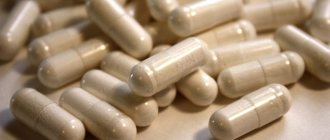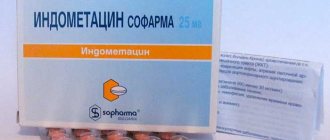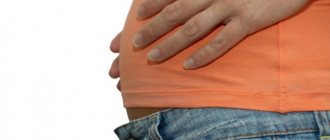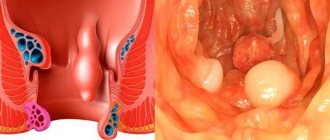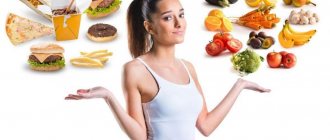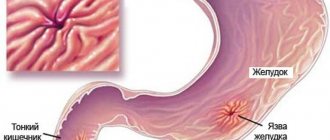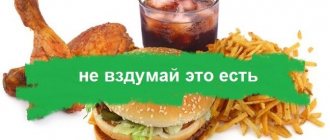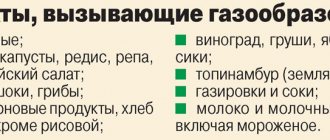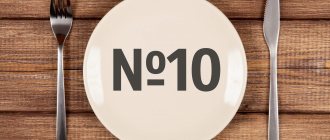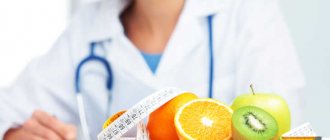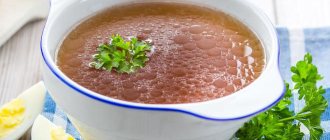Diseases of the digestive system are serious and often very dangerous. In the acute stage, the patient's life may be threatened. In this case, immediate surgical intervention is indicated.
Following the operation, a difficult and even more important period begins - rehabilitation.
Rehabilitation includes a whole range of measures to restore the patient’s body, and at the head of this complex is diet. Only by unconditionally adhering to the diet and rules of nutrition can you avoid a number of complications that can result from intestinal surgery.
Nutrition in the first 4 days
From the moment the patient is removed from anesthesia, he is shown complete fasting for 24 hours. You are not even allowed to drink water. You can wet your lips and rinse your mouth. Parenteral nutrition preparations and glucose are administered intravenously, providing energy support for metabolism.
From the second day, a therapeutic diet is prescribed in the volume of table No. 0a. To mechanically spare the intestines, all dietary food should be of liquid consistency. Prepare a low-fat broth, a decoction of rice, oatmeal, jelly and jelly from non-acidic berries; you are allowed to drink rosehip compote. The serving size is small, but the frequency of meals is maintained up to 7–8 times a day.
The initial stage of the diet is low in calories and is therefore supported by parenteral solutions
Stages of postoperative diet
The diet after intestinal surgery is divided into 4 stages:
- Stage 1. For the first 2-3 days after surgery, you are supposed to eat 8 times a day (no more than 200 grams at a time). Ready-made dishes should have a jelly-like or liquid consistency, the food temperature should not exceed 45 degrees.
- Stage 2. If the intestines tolerate food well and the condition is stable, you can reduce the number of meals to 6. Dose food: no more than 300 grams per meal. You can include pureed soups and cereals. Salt – no more than 5 grams.
- Stage 3. Meals are still fractional, but 5 times a day. The basis of the menu is pureed and chopped dishes, but now you can eat boiled vegetables, low-fat broths, fruit compotes, mousses, jellies. You can bake food in the oven once or twice a week, but not until crispy.
- Stage 4. Meals 4-5 times a day, the menu can be gradually expanded by adding fermented milk products, baked and fresh fruits and vegetables. You can move to this stage if there are no contraindications and there is improvement.
stomach-info.ru hudey.net
Diet for 5–15 days after surgery
From the fifth day, the diet gradually expands. The patient is transferred to table No. 1a. It is also used in the treatment of peptic ulcers. All dishes remain liquid and pureed, but higher in calories (2000–2200 kcal). The frequency of feedings is reduced to six times a day. The body receives 2.5 kg of food per day. The diet contains 80 g of protein and 200 g of carbohydrates.
Patients receive:
- liquid porridges (buckwheat and millet are excluded for now);
- milk soup;
- cereal soup with vegetable broth;
- steamed meat soufflé;
- one soft-boiled egg or steamed omelette;
- fresh grated cottage cheese with a spoon of sour cream;
- berry jelly, rosehip decoction.
Any solid foods and dishes, milk, carbonated water, juices from vegetables and grapes are strictly prohibited.
How should I eat after surgery?
The patient's diet after the intervention should consist of vegetable broths, with adherence to the drinking regime.
Nutrition for intestinal cancer after resection is greatly reduced. In the first days, the patient is allowed to consume broths made from vegetables or lean meats, natural compotes, rosehip broth and vegetables that have been pureed. In addition, one of the main points of the diet when colon cancer is diagnosed is the drinking regime. You will need to drink 2 liters of purified water per day.
A week after surgery, doctors allow you to introduce tougher foods. However, it must be cut into small cubes and cooked using a double boiler. Vegetables and fruits can be added to the menu after 21 days. This must be done carefully and gradually, since otherwise inflammatory processes may develop in the gastrointestinal tract. Brief recommendations are given by O. Gerasimchuk - specialist in dietary and therapeutic nutrition LISOD
Nutrition in the third week after surgery
The surgeon assigns table No. 1b. It is a transition to a physiologically complete diet No. 1, lasts a week. The protein content in the diet increases to 100 g, carbohydrates already amount to 400 g. The energy intensity of the daily diet increases to 3000 kcal. The total volume of food is brought to 2.5–3 kg.
The nature of the diet changes: vegetable purees, meatballs, and steamed cutlets are added to liquid dishes. Semi-liquid buckwheat, oatmeal and rice porridges are prepared, sugar and butter are added to them (in a plate). A little honey is allowed in tea or with rosehip decoction. Pasta and legumes are not recommended.
Diet after removal of a malignant intestinal tumor
The cause of oncological processes in the intestines can be colitis or frequent constipation. Unfortunately, surgery for oncology is a necessary measure. Resection is the removal of the tumor along with the affected area.
Of course, the diet after such a surgical intervention has its own characteristics.
- Food should be ground to a mushy state;
- The amount of liquid, including first courses, should be no more than 1.5 liters per day;
- The BJU ratio is 15/30/55%, respectively.
The menu of a person who has undergone surgery to remove an intestinal tumor should be as follows:
| Time/Day of week | Monday | Tuesday | Wednesday | Thursday | Friday | Saturday | Sunday |
| Breakfast | Fruit juice and biscuits | Oatmeal mixed with kefir | A slice of rye bread and herbal infusion | Kefir or yogurt | Vegetable juice | Kefir and biscuits | Slice of rye bread and tea |
| Lunch | Cereal porridge, tea or herbal decoction | Buckwheat porridge without oil, vegetable salad, juice | Vegetable salad and 100 grams of lean fish | Pepper stuffed with rice, tea | Salad, fruit or vegetable juice | Rice porridge, tea | A portion of low-fat boiled or baked fish, salad |
| Dinner | Puree soup with vegetable broth, boiled fish, juice | Soup, steam cutlets, juice | Vegetable stew, boiled meat, vegetable salad | A portion of broth, boiled poultry meat, tea | Steamed fish mousse, vegetable salad | Vegetable stew, steam cutlet | Cream soup, lean meat, baked without oil, juice |
| Afternoon snack | Kefir or yogurt | Herbal decoction and a piece of bread | Vegetable juice | Fruit juice and biscuits | Kefir with oatmeal | A serving of porridge without oil, herbal decoction | Curdled milk |
| Dinner | Baked fruits and tea | Some rice porridge, fresh fruit juice | Buckwheat and kefir | Boiled meat and bran bread | Kefir and cookies | Boiled fish and vegetable salad | Baked vegetables and tea |
Features of nutrition at the end of the month
By the end of the recovery period, the patient is prescribed diet No. 1. It allows for significant expansion compared to previous versions. The total food mass reaches 3–3.5 kg, calorie content 3000–3200 kcal.
The requirements for a gentle diet (mashed dishes) continue, but porridge with diluted milk (millet is excluded), kefir are introduced, chopped meat, casseroles, small vermicelli or noodles, and omelettes are allowed. You can eat pureed vegetables to a limited extent. Berry and fruit jelly are allowed.
The composition of the menu corresponds to the physiological daily norm: protein increases to 100 g, fats can be 100–110 g, carbohydrates 400–450 g. The patient is allowed:
What can you eat if you have appendicitis?
- dried wheat bread, crackers, biscuits;
- cereal soups with non-rich meat broth;
- boiled dishes from lean meat and fish, soufflés, cutlets, meatballs;
- vegetable puree from carrots, potatoes, cauliflower, pumpkin, zucchini;
- non-acidic berries and fruits in compote, boiled in porridge, baked;
- a little honey, jam.
How long the patient will be on diet No. 1 depends on the individual characteristics of the disease and immunity. Most often it takes 2–3 weeks.
Menu for patients who have undergone colon surgery
Any operation is, although necessary, still an intervention in the functioning of internal organs. Colon surgery is no exception. Natural functions are disrupted: the process of fluid absorption is reduced, the ability to absorb many vitamins and minerals is reduced.
Therefore, there is a specially designed diet that takes into account all the above factors.
In addition, after carrying out such an operation, you must remember:
- On the first day after colon resection, it is imperative to observe a fasting regime, even drinking water is excluded.
- In the future, the most gentle diet should be observed, including foods that do not provoke intestinal motility.
| Time/Day of week | Monday | Tuesday | Wednesday | Thursday | Friday | Saturday | Sunday |
| Breakfast | Tea, dried apple compote | Fruit compote | Buckwheat porridge, necessarily pureed tea | Buckwheat in water with the addition of milk or a small piece of butter. | Soft-boiled egg, pureed rice porridge and water tea | Soft-boiled egg, liquid buckwheat porridge, a little chopped cheese, tea | Puree oatmeal, omelette, tea with milk |
| Lunch | Apple compote | Fruit jelly, rice decoction | A little cream, rosehip decoction | Steamed egg white omelette, low fat cream | Baked apple, fruit jelly | Low-fat cottage cheese with a little cream, a few crackers | Meat cutlets and baked apple puree |
| Dinner | Weak meat broth | Meat broth with butter | Meat broth with semolina, steamed veal soufflé, herbal decoction | Meat broth, steamed chicken soufflé | Oatmeal soup with weak meat broth, meatballs and vegetable puree | Light noodle soup with meat broth and boiled meat. | Cream soup, steam cutlets, herbal decoction |
| Afternoon snack | Fruit jelly and rosehip decoction | Herbal decoction | Soft-boiled egg, pear jelly | Thin fruit jelly | Rosehip decoction, crackers | Liver pate, bran decoction | Curd soufflé |
| Dinner | A little rice water | Steamed egg white omelette | Steamed lean fish soufflé or mousse, pureed oatmeal in chicken or meat broth | Oatmeal with meat broth and a small piece of butter, steamed fish mousse | Boiled fish, liquid vegetable puree, tea with cream | Boiled tongue with light vegetable sauce, rosehip decoction with syrup | Steamed fish without skin, tea with sugar |
Diet for the final stage of recovery
Nutrition after intestinal surgery must go through another restrictive period so that the body is fully functionally prepared to receive and digest solid foods. For this purpose, table No. 4c is assigned.
The basis of this option is diet No. 1; the requirements for boiling, baking or stewing all dishes remain, but the introduction of uncut food is allowed. Prohibited: salt, spicy seasonings, foods that can increase fermentation in the intestines. The meat is served in pieces or chopped. Non-acidic fruits and berries (strawberries, apples, pears, bananas) in their usual form are allowed.
Of the juices, the only exception is grape juice; others can be drunk after diluting with water.
You can't eat:
- fresh baked goods;
- fatty meat and fish;
- confectionery products with cream, puff pastry;
- rich soups;
- canned food;
- legumes in any form;
- smoked meat products;
- salted vegetables, fish.
The doctor decides how long to adhere to diet table 4c depending on the course of the disease and restoration of digestion. Some patients will be forced to follow nutritional rules throughout their lives. Patients who undergo endoscopic surgery most quickly and relatively well tolerate alternating stages of diet expansion.
Removal of polyps, diverticula, small circumscribed tumors, adhesions during colonoscopy, laparoscopy is considered a low-traumatic method of intervention, so healing is faster.
Special purpose
Table No. 0 and its varieties (0a, 0b, 0c) includes food products that contain the required minimum of vitamins and minerals. After surgery, solid, rough food is often contraindicated for patients after surgery, so the body in most cases does not receive enough nutrients and the rehabilitation process is delayed. Liquid medicinal food helps relieve the digestive system and prevents the appearance of gases in the intestines.
Indications
- brain or skull injuries;
- acute gastritis;
- recovery after surgery on the digestive organs;
- intoxication of the body.
Diet options No. 0
Features of the diet after surgical treatment of various diseases
Choosing the right menu requires an individual approach and taking into account a person’s specific disease. Having corrected the intestinal pathology, treatment should prevent a relapse and, if possible, eliminate the cause of the disease. To do this, doctors add special nutritional conditions.
After appendicitis removal
Diet 0a is maintained for the first 2 days. On the 3rd–4th day, the operated patient is transferred to option 1b, and from the fifth day - to a full-fledged table 1. Within a few days, the diet expands to the physiological norm. The serving size increases from 100 g to 300. At the same time, it is recommended to drink up to 2 liters of liquid per day.
For at least two weeks the patient eats mainly liquid meals
What foods are prohibited for consumption?
All foods and dishes that enhance putrefactive and fermentation processes are excluded (vegetables with coarse fiber, legumes, beer, rye bread, wholemeal wheat bread, fresh bread and pastries, kvass, carbonated water). In this regard, the consumption of soups made from legumes is prohibited, with restrictions on the use of cabbage soup and borscht and rassolnik.
Strong stimulants of secretion of the gastrointestinal tract - extractive substances in the form of strong and fatty broths.
Products with essential oils (garlic, celery, onion, garlic, radish, radish, spinach).
You cannot eat sharp and salty cheeses, fatty meats, fish, poultry, canned meat and fish, hot, fatty sauces, mustard, horseradish, pepper, smoked meats, and meat products. The exception is boiled sausages.
Millet, pearl barley, barley, corn, cooking fat, pork and beef, margarine, and vegetable oil are excluded from the diet.
The consumption of ice cream, chocolate, cakes, carbonated and cold drinks, grape juice, kvass, and fruit drinks is not allowed.
Table of prohibited products
medside.ru
Specialized types of diets after individual operations
Removal of the uterus and ovaries
This operation is considered quite simple among doctors. But in any case, it is a huge stress factor for a woman’s body, since normal hormonal levels are disrupted. In addition, this often leads to damage to the abdominal muscles. The optimal diet after surgery to remove female reproductive organs should be aimed at restoring normal metabolic processes and stabilizing hormonal levels. It should also help speed up the healing of the postoperative scar. And of course, ideally, the diet after surgery should help strengthen the woman’s immunity and increase her body’s resistance to germs and infections.
Meals should be frequent, but the portions should be small in volume. It would be ideal to split the usual three meals a day into 6 meals.
You should not eat semi-finished products, as well as canned food, sausage products, especially smoked types, as well as spicy and fatty foods.
In order to avoid fermentation, bloating and gas, the diet prescribes the need to avoid white cabbage, legumes of any kind, sweet baked goods, and bread. The fact is that gas formation can cause pain in a wound that has not yet healed in the area where the uterus used to be, and can prevent its rapid healing.
Also, the diet required after surgery does not favor alcohol, coffee and strong tea. For drinks, it is better to drink plain water, juices, but only thoroughly diluted with water, jelly and fruit drinks. For hot drinks, give preference to green tea. Carbonated drinks are completely excluded.
You can have viscous porridge, steamed or boiled lean meat, lean fish (cod, navaga). If you eat vegetables, it is advisable to do so after heat treatment, since it is still difficult for the stomach to cope with tough raw vegetables. Fermented milk products are healthy and recommended, but only unsweetened types. You can’t rely on yoghurts with sweeteners, dyes and preservatives. You can have fruits, except citrus fruits.
Diet meat patties with steam rice porridge
The diet requires the mandatory intake of vitamin complexes; you can take a special complex for pregnant women, which contains the optimal set of all useful minerals and necessary substances.
Removal of inguinal hernia
This operation is performed in two ways: either using laparoscopy, that is, a small incision, or it is a full-fledged abdominal surgery for removal. In both cases, it is important after the operation to eat more protein-rich foods so that the muscle tissue damaged during the operation heals faster.
Protein products are needed. This is meat without fat, cottage cheese, milk, but only diluted with water, eggs, cheeses, except processed ones. Porridge, buckwheat and millet are especially useful. Vegetables, except legumes. You can use any fruit.
What is not recommended:
- Sweet dishes with a high content of refined, useless sugars.
- Spices, including Korean carrots and sauerkraut, are temporarily banned.
- It is extremely undesirable to consume smoked meats after surgery, since their production uses components that irritate the walls of the stomach.
- Canned products are also undesirable.
- After any surgery you should not drink alcohol.
After a certain recovery period, the patient will be able to completely return to the previous diet that he had before the operation.
Gallbladder resection
This operation is now routine and is carried out quite quickly and without complications; the gallbladder is removed during this operation either partially or completely. But in any case and the patient’s condition, the postoperative diet prohibits:
- Fatty dishes.
- Smoked foods, pickles and all sorts of delicious marinades are all things that can irritate the walls of the stomach.
- Mushrooms and onions of any kind are also completely excluded.
- Sweet products containing creams and sweet soda are unacceptable.
What you can do:
- Lean meat and fish.
- The bread should be slightly dry.
- Kefir and unsweetened yoghurts, cottage cheese.
- It is not advisable to use butter; it is better to use vegetable oil.
It is important to monitor the temperature of the food. You should not eat food that is either too hot or too cold. Body temperature will be optimal.
Zero diet
The zero diet after surgery is divided into types A, B and C.
Group A is the most strict
This diet is prescribed after particularly serious operations and those interventions that were completed with complications. It is observed for three to five days after the operation. What is allowed to be consumed on the subtype A zero diet? This is the lowest calorie diet of all. The daily calorie intake according to the menu is only 780 kilocalories. Diet content:
- Tea with a little sugar. You can add a slice of lemon.
- Rosehip decoction, you can add a little sugar.
- Kissels are made on a natural basis without artificial ingredients.
- Juices diluted with water, except citrus fruits.
- You can use jelly that is not too sweet.
- Broths with low fat content.
- White rice decoction has a slimy consistency.
Portions should be small, approximately 150-200 grams, but the meals themselves should be split up to seven times a day. This will allow you not to overload your stomach and will give the whole body time to recover.
Diet B
- Porridge is added in liquid and semi-liquid form. Cereals such as rice, buckwheat, and oatmeal (rolled oatmeal) are used.
- Cereal-based soups with a liquid consistency.
- Sometimes you can steam an omelet from just whites. Also, if the patient’s condition is appropriate and with the doctor’s permission, meat soufflé can be served.
- You can use a little and infrequently cream with a small percentage of fat content.
One meal should be no more than 380 grams. In total, meals per day should be provided in 6 meals, and the total daily energy intensity should not exceed 1600 kcal.
Group B
This is the least restrictive of the postoperative diets. In fact, this is a transitional stage to normal preoperative nutrition. The requirements for this diet are described in the section on the basic postoperative diet.
Diet No. 1
Diet number 1 after surgery is intended for patients after lung surgery, treatment of stomach ulcers, and cancer of the digestive organs. It begins only after a three-day rehabilitation period of tube feeding and after completing all stages of the traditional zero diet. In this diet, the total daily calorie content of dishes is already quite high - 2800-3000 kcal, since the body is already stronger and needs more strength to recover. You should still eat in small portions - 5-6 meals per day. What you can use:
- Warm steamed food. Cold food is excluded.
- All dishes must be thoroughly chopped; nothing should interfere with chewing.
- The dishes and products are the same as with the zero diet.
Features of a lipid-lowering diet
The purpose of this nutritional system is to stabilize weight, reduce the amount of cholesterol in the blood and improve the functioning of the digestive system.
The main principle of the diet is variety. It is intended for long-term use and does not involve serious dietary restrictions. Excellent as a daily diet after applying a strict therapeutic diet.
A lipid-lowering diet helps normalize the activity of the gastrointestinal tract and reduce body weight
Features of a lipid-lowering diet:
- fractional meals, 5 to 6 times a day in small portions;
- drinking at least 2 liters of still water every day;
- emphasis on representatives of the cereal and fruit and berry families with a high fiber content, at least 400 grams per day;
- reducing the amount of animal fat consumed;
- the main source of protein is poultry, cottage cheese and low-fat fish;
- moderate use of dairy products;
- the number of yolks is 3 pieces for 7 days;
- It is advisable to steam meat products;
- inclusion of seaweed and seafood in the diet;
- The permissible daily amount of bread is 200 grams, which is equal to 2 medium pieces.
Laminaria (sea kale)
You need to have dinner a few hours before going to bed, giving preference to protein dishes.
Table 6. List of recommended and prohibited products
| Can | It is forbidden |
|
|
A lipid-lowering diet should be followed for at least 2 months
Approximate diet for 3 days
It is allowed to swap the indicated dishes and skip intermediate meals. It is also possible to replace products with analog ones with the same calorie content.
Day 1:
- Breakfast - cheesecakes and 1 glass of freshly squeezed juice.
- Second breakfast - fruit salad of persimmons, apples and pears.
- Lunch - steamed chicken fillet and boiled rice with a vegetable side dish.
- Afternoon snack - 2 pieces of bread and 1 baked apple.
- Dinner - vegetable salad and red fish baked with lemon and basil.
Day 2:
- Breakfast - low-fat omelet and tomato salad with added herbs.
- Second breakfast - vegetable salad with apple cider vinegar.
- Lunch - potato and carrot soup in a light broth, Greek salad and 1 slice of bread.
- Afternoon snack - low-fat yogurt with jam.
- Dinner - boiled fish fillet with mashed potatoes.
Day 3:
- Breakfast - wheat porridge cooked with pumpkin.
- Second breakfast - 1 soft-boiled egg and a slice of bread.
- Lunch - steamed veal and vinaigrette.
- Afternoon snack - 2 bananas.
- Dinner - pasta with stewed chicken.
Daily 2 liters of water should be divided into 8 glasses and drunk either 30 minutes before a meal or 1 hour after a meal. If you feel hungry before going to bed, you can quench it with 1 glass of low-fat kefir, 1 carrot or small apple. If the body requires sweets, it is allowed to eat sugar-free jelly, low-calorie crackers, oatmeal cookies or dried fruits several times a week.
Dried fruits instead of sweets
Any surgical intervention is a great stress for the body. The operation is fraught with disturbances in metabolic and digestive processes, therefore in the postoperative period the patient must strictly adhere to a therapeutic diet. It will help you get enough nutrients and restore the functioning of the gastrointestinal tract.
Postoperative period
In the first days after surgery, the patient may experience painful symptoms of varying severity. If pain is particularly severe, the doctor may prescribe pain medication to the patient.
. Throughout its entire duration, the patient will have to maintain a number of strict restrictions (as when recovering from anesthesia):
- maintaining a rest regime;
- minimum level of activity;
- do not smoke or drink alcoholic beverages.
As the pain signals fade, the dosage of painkillers is gradually reduced. But the strictest ban on bad habits remains in force. How much fluid can you take in the postoperative period at a later date? Before the operation, the doctor gives a complete and comprehensive picture of how to behave, what rules to follow after recovery from anesthesia and during the postoperative period.
Their nuances depend on the nature of the operation and the type of anesthesia used. On average, 2–3 hours after emerging from anesthesia, the patient is allowed to take a little water (several sips). And after 6-7 hours you can already drink in full; drinking plenty of fluids during this period is even recommended.
This increased drinking regimen helps stimulate kidney activity, which facilitates the rapid elimination of narcotic metabolites from the body after anesthesia. But in any case, the specifics of the drinking regime in the postoperative period will be determined by the attending physician. The patient’s only responsibility is to strictly follow all recommended rules.
General anesthesia is often necessary during surgery. That’s why nutrition after general anesthesia is a fairly common issue. It is known that its effect on the body does not pass without leaving a trace, and therefore proper rehabilitation is required in the first days after it. The speed of recovery of the human body depends not only on the attending physicians, but also on the patient’s serious approach to this issue. What you are allowed to eat after any operation, and what you should avoid, will be discussed in this article.
Quite often, doctors give their patients a special reminder about what they can eat after anesthesia. But why stick to such diets, especially since they have quite a lot of restrictions for a person who does not have serious illnesses.
It is a specially selected diet that helps a person restore all the microelements in the body that will be lacking at this time. These include: vitamins, proteins, minerals, and the body also requires replenishment with fluid.
It is in the first few hours and days that the patient has to adhere to a special diet. Eating after anesthesia will also help ensure proper metabolism. If the operation was carried out in relation to the organs of the digestive tract, then more stringent food restrictions will be required.
The biggest problem is that anesthesia artificially inhibits any reaction of the human central nervous system, not just pain. There are different types of anesthesia: superficial, light, deep and very deep. They are selected by anesthesiologists depending on the complexity of the operation and the person’s individual tolerance to anesthetics.
After coming out of anesthesia, a person remains inert and inhibited for some time, his systems only begin to work at the same pace.
It is for this reason that proper nutrition is so important, which will not burden the human body and will help avoid unpleasant consequences during recovery.
General rules
Surgery is often the only possible and effective method of treating/preserving the patient’s life, and proper nutritional support, regardless of the type of operation, is an essential component of the patient management algorithm in the postoperative period.
Therapeutic nutrition after surgery depends, first of all, on the type, volume and nature of the surgical intervention. It is obvious that nutrition after surgery on the gastrointestinal tract differs from nutrition after surgery on organs not related to the gastrointestinal tract or nutrition of patients operated on for oncology. Moreover, modern dietetics involves individual correction of therapeutic diets depending on the patient’s nutritional status, the presence of metabolic disorders (protein-energy deficiency), and complications, which makes it possible to speed up the rehabilitation period. Dietary nutrition is of great importance after surgery on the upper (esophagus, stomach) and lower (intestines) gastrointestinal tract, organs of the hepatobiliary system.
Parenteral nutrition after surgery on the gastrointestinal tract begins with sequentially prescribed surgical Diets 1 (0) A , 1 (0) B and 1 (0) C and the basic Diet No. 1 (mashed/non-mashed version). The main goal of these diets is to unload/spare the organs, provide the body with a minimum amount of food nutrients, and prevent intestinal disorders ( flatulence , constipation ). The diet includes foods that are easily/well digestible, containing complete proteins/fats/carbohydrates/micronutrients and an increased amount of fluid.
At the same time, salt is sharply limited. The load on the digestive organs should increase gradually, which is achieved by prescribing fasting on the first postoperative day and gradually expanding the diet and volume of food taken: on day 2 - 250-300 ml of sweet warm tea/rosehip infusion every 15 minutes, a teaspoon; on days 3-4, with normal peristalsis, Diet No. 1(0) A and 2 soft-boiled eggs are prescribed; from 5-8 days Diet No. 1(0) B ; on days 9-10— Diet No. 1(0) B.
Each of these diets differs in the set of permitted foods, the consistency of the dishes, the content of dietary fatty acids in the diet, the energy value, the amount of food consumed and the diet. And if Diets 1(0) A - 1(0) B are not complete and the period of stay on each of them is 2-4 days, then Diet No. 1 provides physiologically complete nutrition and the patient can stay on it for a long period.
The diet on Diet No. 1 contains 100-110 g of protein, the source of which is boiled fish/boiled minced meat, egg white omelets, fresh pureed cottage cheese. The fat content is also at the level of physiological norms or even higher (80-90 g). If they are poorly tolerated (regurgitation, bitterness in the mouth, diarrhea), fats are limited to 60-70 g/day. The carbohydrate content is at the level of 300-320 g, the restriction concerns mainly easily digestible carbohydrates.
Despite a fairly wide range of products, the basic rules and restrictions remain the same (consumption of low-fat fish/beef, non-concentrated meat soups, dried (yesterday's) wheat bread, low-fat chicken dishes, boiled/raw pureed vegetables, unsweetened cookies, low-fat fermented milk products, cheese, dietary sausages, garden herbs, buckwheat/rice, potatoes, fresh fruits and berries.
Fried foods, strong meat-based broths, spicy/salty foods, smoked foods, canned food, fresh bread, solid animal fats, spicy snacks, and dough products are prohibited. Culinary methods of cooking are also preserved: boiled/steamed, and after boiling, stewed/baked. After 6 months after surgery, you are allowed to gradually switch to a normal diet.
A postoperative diet for operations on the large intestine ( colectomy ) involves transferring the patient after surgical diets to therapeutic Table No. 4 / its varieties (in the presence and predominance of certain functional disorders of the intestine - diarrhea / constipation). The main task is to create conditions so that during the first 3-4 days the patient does not have bowel movements and especially constipation.
After surgical interventions on the abdominal organs without violating the integrity of the digestive tract (pancreas, gall bladder, spleen), the basic diet is Table No. 5 / its variants ( 5A , 5B , 5P ).
The postoperative diet for operations outside the alimentary tract is based on standard operating tables for the first 1-2 days, and then transferred to treatment Table No. 15 with individual correction. Thus, the diet after heart surgery ( bypass surgery / stenting ) is aimed at reducing the risk of continuing the process of developing atherosclerosis/coronary artery disease, which is based on the nutritional factor, as well as repeated vascular operations. This is achieved by reducing the energy value of the diet and adjusting the diet, for which a hypocholesterol diet .
The postoperative diet acquires particular importance after operations for malignant tumors both on the gastrointestinal tract and outside of them. The situation is complicated by the fact that, as a rule, surgery for oncology is accompanied by preliminary/subsequent administration of chemotherapy / radiation therapy , which negatively affects the patient’s condition.
The diet for cancer after surgery is tailored individually, taking into account the nutritional status of the patient, the condition of the organs that limit the ability to absorb foods, appetite and psychological state. The diet and its calorie content varies widely depending on the organ being operated on, the stage of the disease, and the presence/absence of significant weight loss.
Super food after surgery. Diet for convalescents: Video
The postoperative diet also depends on many factors. The most important thing is whether the operation was performed under anesthesia?
Nutrition after general anesthesia prohibits fluid intake for two hours. Then you can drink in small sips, and only after 5-6 hours after the operation it is recommended to drink heavily. This is due to the fact that general anesthesia inhibits the swallowing reflex and everything returns to normal gradually. That is, the patient needs some time for the paralysis of the pharynx to pass, otherwise he will simply choke.
Further, everything depends on the organ and system on which the operation was performed. The strictest is after operations on the gastrointestinal tract, usually No. 0 according to Pevzner. Its principle is liquid food with a minimum set of proteins, fats and carbohydrates to provide a gentle regime for the recovering system.
What you can and cannot eat after intestinal surgery
In the first hours after anesthesia, the patient’s lips are only moistened with water. Nutrition is only parenteral. After 5-7 days, a gradual return to a normal diet is provided, but subject to strict restrictions. The doctor introduces the general principles of nutrition and food selection to the patient:
- Eat every two and a half hours.
- Prepare portions not exceeding 100 g.
- Include foods with animal protein in your diet in the form of boiled lean pork, chicken, and beef.
- Drink fermented milk drinks to avoid excess bile secretion.
- Avoid products made from yeast dough, except dry bread.
- Citrus fruits, pears, sour apples, and grapes are prohibited.
- Boil and grind the vegetables. Only broccoli is allowed from cabbage.
- Nuts and legumes often provoke peritonitis, so they are not allowed even 20 days after surgery.
- Drink kefir, dried fruit compote, freshly prepared juice. Avoid caffeinated and carbonated drinks.
Over time, the diet expands. This happens gradually. Cabbage dishes can only be included six months after discharge from the hospital.
Recipes for each stage of the diet
- Uncooked chicken broth (for diet 0a)
Take a medium-sized chicken fillet and cook broth from it. It is not advisable to add vegetables or spices to it, just like salt. If the chicken is homemade, then change the water 2 times and only give the third broth in parts to the patient.
- Steamed rabbit soufflé (for diet 0b)
Take 200 g of rabbit pulp, grind it in a blender or pass it through a meat grinder 2-3 times. Salt the resulting mass, add 2 yolks into it, mix everything thoroughly, then separately beat 2 egg whites into a thick foam and also carefully add them to the minced meat. Place the mixture in a greased form and steam.
- Steamed catfish cutlets (for diet 0c)
Prohibited Products
Products with a high content of fiber and insoluble fiber are removed from the diet. This group includes:
- difficult-to-digest cereals - pearl barley, barley, corn, millet;
- whole wheat bread;
- bran;
- muesli;
- nuts;
- seeds;
- vegetables – white cabbage, bell peppers, tomatoes;
- legumes;
- mushrooms;
- fresh fruits.
Prohibited dishes while on a diet: cabbage soup, borscht, complex side dishes. After appendicitis, you should not eat fatty meat - pork, duck, goose, game. The chicken is cooked without skin.
To maintain a normal pH level in the intestines, during the postoperative period, avoid foods that stimulate the production of gastric juice and bile.
During the diet it is necessary to exclude:
- roast;
- alcoholic, carbonated drinks;
- coffee;
- cocoa;
- baking;
- marinades;
- rich broths;
- pickles;
- hot seasonings - mustard, adjika, pepper;
- smoked meats;
- sour berries;
- cucumbers;
- processed cheese.
Sugar is limited after removal of the appendix, because... excess of this product causes fermentation in the intestines. Desserts prohibited by the diet:
- confectionery products – cakes, pastries, sweets;
- lollipops;
- chocolate
- ice cream.
Proper nutrition for appendicitis excludes the consumption of store-bought semi-finished products. They contain soy, dyes, thickeners and a lot of salt. Such supplements after appendectomy may harm the gastrointestinal tract, weakened by surgery. Fatty foods are difficult to digest and contribute to the spread of pathogenic bacteria in the gastrointestinal tract. After an appendectomy, you should avoid adding animal fat, cooking oil, or margarine to your meals. They take a long time to digest, increasing the load on the fragile digestive system.
After appendicitis, you should not eat foods that cause disgust, even if they are very healthy.
Children have the same dietary restrictions as adults. The only difference is in the size of the portions. It is important to follow a gradual transition in the diet, since after the operation and the fasting regime the child constantly wants to eat.
Authorized Products
The diet after surgery in most cases includes the following foods in the diet:
- Lean red meat (beef/veal), well boiled and chopped, poultry (chicken/turkey) and rabbit.
- White fish of low-fat varieties (hake, pike, cod, pollock) steamed/boiled.
- Slimy soups made from rice, oatmeal and buckwheat in vegetable/chicken broth with the addition of butter/low-fat cream/egg-milk mixture to the finished dish.
- Dried white bread, crackers, savory cookies.
- Porridge of semi-liquid consistency in milk/water from oatmeal, buckwheat, rice cereals, with the addition of butter.
- Low-fat cottage cheese, fermented milk products, soft-boiled chicken eggs/in the form of a steam omelet.
- Virgin vegetable oils (linseed, olive, sunflower, corn).
- Freshly squeezed juices, rosehip infusion, weak green/herbal tea with cream, sweet berry jelly/jelly, still mineral water.
Nutrition after gynecological surgery
Compliance with the feeding regimen after gynecological abdominal surgery is of great importance in the restoration of the female body . In the first 24 hours, intravenous injections are administered as needed, which have an anti-inflammatory effect, and food is not allowed. After this period, infant formula can be introduced into the diet.
A little later, you can eat cereal liquid porridge-purees containing fiber. During this period, it is forbidden to take bread, full-fat milk and soda. The menu should be varied with light foods and avoid eating raw foods.
After a week, the diet should be significantly increased by adding leafy greens, low-fat meat and fish delicacies, steamed.
It is advisable to drink a decoction of rose hips and dried fruits. Cranberries and prunes have anti-inflammatory properties and are recommended to be taken during this period.
What products are allowed for consumption?
It is allowed to eat well-cooked cereals (except for coarse millet, barley, pearl barley, and corn). They can be cooked with water, broth or with the addition of milk. Cereals are added to puddings and casseroles.
Boiled thin vermicelli, medium-sized noodles or chopped pasta are allowed.
Low-fat varieties of meat and fish in the form of steamed cutlets and quenelles, soufflés and whole pieces.
Soups with recycled meat and fish broth. Cereals in soups are well boiled and lightly kneaded, and vegetables are finely chopped. Potatoes, carrots, cauliflower and zucchini are added to the first courses, and if tolerated well, white cabbage, green peas, green beans and beets are added.
You can add quenelles, meatballs, or any minced meat to soups.
Wheat bread (grade I and higher), dried or stale, is allowed. Dry cookies and biscuits.
If well tolerated, once a week you can eat baked goods with meat, cottage cheese, jam, and apples.
Boiled vegetables can be served finely chopped as a side dish, in the form of cutlets or stews. If tolerated well, the consumption of ripe tomatoes and cucumbers is allowed, after removing the skin from them. You can introduce leaf salads with sour cream.
Milk and cream are allowed as an addition to the dish. If tolerated well, you can drink whole milk. Fermented milk products (acidophilus, kefir and yogurt) remain the main ones in the diet, which are recommended to be consumed throughout the day.
Cottage cheese or dishes made from it should be present in your diet every day. Mild cheese is allowed. Butter (10-15 g per serving) with bread or in dishes.
It is allowed to eat soft-boiled eggs (up to 2 eggs per day) and omelettes. In raw form, you can eat ripe sweet fruits without peel up to 200 g per day (apples, pears, strawberries and raspberries).
Melons, watermelon, apricots and plums are excluded. Apples and pears can also be baked, and jelly, jelly and compotes can be made from the berries.
From confectionery products - fruit marmalade, marshmallows, marshmallows, preserves, jam.
The range of fruit and vegetable juices has been expanded - you can consume everything, after diluting it (1:1). Grape and cabbage juice is excluded.
Tea, cocoa with water or with the addition of milk, coffee with milk, and rosehip infusion are allowed.
Table of permitted products
medside.ru
